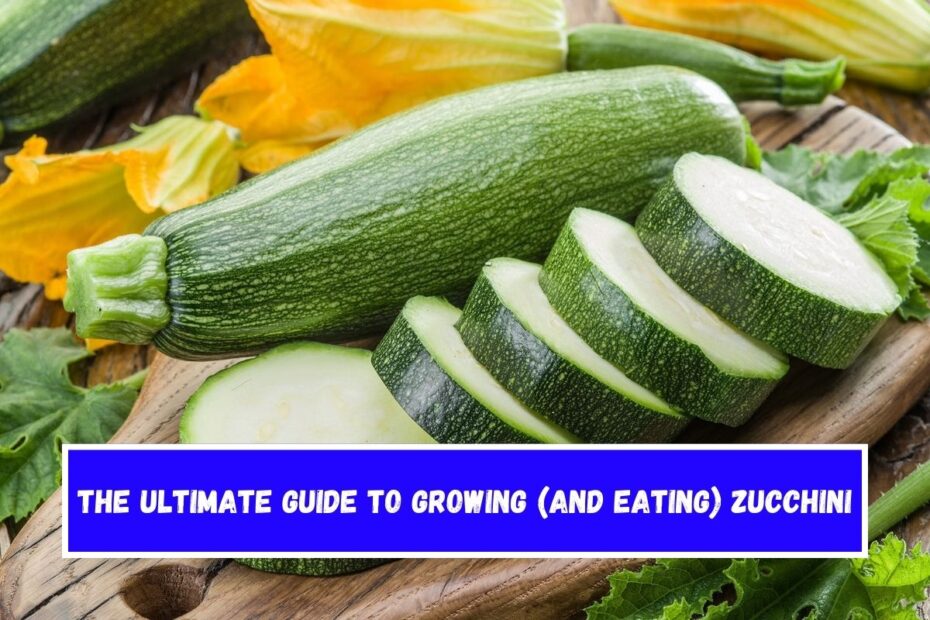The Ultimate Guide to Growing (and Eating) Zucchini:- People who garden and cook both love zucchini, a summer squash with a mild taste that can be used in many ways.
The Ultimate Guide to Growing (and Eating) Zucchini
It will help you get the most out of your zucchini from the time you plant it until you pick it.
Planting and Growing Zucchini
Choosing the Right Variety
There are different kinds of zucchini, like green, yellow, and even striped ones. “Black Beauty,” “Yellow Crookneck,” and “Costata Romanesco” are some of the most popular kinds. Pick a type based on your personal style and the conditions of your garden.
Planting Time and Location
As a warm-season crop, zucchini does best when it’s between 70°F and 85°F. Start seeds indoors three to four weeks before the last frost, or plant them in the yard as soon as it’s safe to do so. Choose a sunny spot with earth that drains well and has been amended with compost. Every day, zucchini plants need at least 6 to 8 hours of sunlight.
Soil Preparation
Add a lot of compost or old manure to the dirt to get it ready. Soil with a pH of 6.0 to 7.0 is best for zucchini because it is slightly acidic to neutral. Root rot can be avoided by making sure the dirt is loose and drains well. For better drainage, use raised beds or rows with a slight slope.
Planting
Give zucchini plants about two to three feet of space between them so they can spread out. When you put seeds, do it an inch deep. When the seedlings get a few inches tall, thin them out to the strongest plants. To direct sow, fill each hole with three to four seeds. When the seedlings have two to three true leaves, thin them out to the best one.
Watering and Fertilizing
Zucchini needs to be consistently moist. Once a week, give the plants a lot of water, but don’t let the dirt become soggy. Put mulch around the plants to keep the soil wet and make it harder for weeds to grow. Every 4 to 6 weeks, use a balanced, all-purpose fertilizer to feed the plants, or use compost to keep the minerals coming in.
Pest and Disease Management
Bugs like squash bugs, aphids, and cucumber beetles should be on the lookout. You can get rid of these bugs by handpicking them or using soap that kills insects. Powdery mildew is a common fungal disease.
To get rid of it, space your plants out enough to let air flow and don’t water them from above. Fungicides or natural remedies like neem oil can be used to treat fungal diseases.
Harvesting
Since zucchini plants grow quickly, you should check on them every day once they start making zucchini. For the best taste and texture, pick zucchini when it’s between 6 and 8 inches long. Pick them often to make sure they keep producing fruit. Don’t let your zucchini get too big, because it can get tough and nasty.

Preparing and Enjoying Zucchini
Culinary Uses
Zucchini can be used in a lot of different ways in the kitchen. If you want to eat it raw in a salad, sauté it, grill it, or bake it. You can also add it to soups, stews, and casseroles. Because zucchini has a mild taste, it works well with many different spices and ingredients.
Basic Recipes
- Sautéed Zucchini: Make rounds or half-moons out of the zucchini. In a pan with olive oil, heat it up. Add the zucchini and cook it until it’s soft. Put in garlic, salt, and pepper to taste. Put fresh herbs on top, like parsley or basil.
- Zucchini Noodles: Use a spiralizer to make noodles out of zucchini. For a low-carb alternative to pasta, toss with your favorite sauce or quickly sauté.
- Zucchini Bread: To make quick bread, grate zucchini and mix it in with the batter. The bread stays soft because the zucchini adds wetness and a light sweetness.
- Stuffed Zucchini: Cut zucchinis in half lengthwise and scoop out the middles. Add cooked ground meat, rice, veggies, and cheese to the inside. The sauce should be fully cooked and the zucchini should be soft.
- Zucchini Fritters: To make fritters, mix chopped zucchini with flour, eggs, cheese, and herbs. Fry them in a pan until they turn brown. Serve them with yogurt or sour cream on top.
Preservation
If you have a lot of zucchini, you might want to think about storing it. Slices or chopped zucchini can be blanched and put in freezer bags to be frozen. You can also freeze zucchini or make relishes to store it for a long time.
Health Benefits
It’s low in calories and high in nutrients and vitamins. Along with antioxidants and vitamin C, it’s a good food choice. Zesty vegetables are good for you because they are high in water and nutrients.
These tips will help your zucchini garden grow well so you can enjoy lots of tasty meals during the growing season. No matter how experienced you are as a gardener, zucchini is a satisfying and flexible crop that can be used in a lot of different ways.
Also See:- 9 Fun Fall Gourd and Pumpkin Facts
